What is Candida?
Candida or the fungus Candida albicans is an otherwise harmless yeast fungus that is present in every one of us. The problem arises if due to certain factors (stress, taking antibiotics, disease,…) the balance in our intestines is disturbed and consequently the number of good bacteria is reduced, which ensures that the candida does not grow or multiply excessively.
Once the fungus multiplies too much, various digestive and skin problems can begin to appear, and in the worst cases, which are otherwise extremely rare, candida can also enter the bloodstream. The most obvious sign of candida overgrowth in the gastrointestinal tract is a white coating on the tongue, which can become thicker if left untreated. There are many different microorganisms in our body that can be neutral, pathogenic, or beneficial to our health. Candida (the most common is Candida albicans, but there are about 100 species of Candida) is a neutral microorganism that has certain functions in our body (helps with digestion and absorption of nutrients) and is normally present in the body, especially in the respiratory and digestive tract and in the area of the female genitalia. Candida albicans is a diploid yeast fungus whose action is regulated by the immune system and is normally unproblematic. However, if the environment changes and the immune system is compromised, it transforms into a multicellular filamentous form that penetrates deep into the host tissue, travels through the bloodstream and affects various parts of the body, where it attacks cells and draws nutrients from them.
This is also associated with an overreaction of the immune system, which causes various allergies, bronchial asthma and other health problems (the disease can occur in the blood, intestines, skin, nails and other internal organs and mucous membranes).
Candida releases 79 different substances (including uric acid and the neurotoxins formaldehyde, alcohol, and acetyldehyde) that weaken the immune system. The action of pathogenic candida also results in frequent inflammations that thin the intestinal walls (as a result, toxins and unprocessed food molecules enter the bloodstream).
Causes of candida problems?
Among the most common causes for the direct or indirect destruction of beneficial bacteria in our gut and the proliferation of candida and the formation of its pathogenic form are certainly:
-improper diet with a large intake of simple sugars, processed carbohydrates, fats and foods that make us very acidic (in addition to sugar, the list also includes all foods of animal origin) -alcohol -mental and physical stress, emotional and energy blockages -antibiotics -contraceptives and other pills -amalgam fillings and other heavy metals -chlorine and fluoride -various toxins from the environment, water, food,furniture,cosmetics,....
Candida - symptoms
Candida bloating can be a very problematic condition that manifests itself through a variety of symptoms. The symptoms of candida can be similar to the symptoms of other health problems (irritable bowel syndrome, arthritis, chronic fatigue syndrome, diaper rash, Crohn’s disease, gastroenteritis, etc.). For this reason, additional tests should be done to help determine if recurrent symptoms are related to candida proliferation.
Nervous system (poor concentration, poor memory, irritability, anger, dizziness, depression, panic attack, sadness, decreased libido, chronic fatigue, hyperactivity, cravings for sweets and alcohol, insomnia, poor coordination). Digestive system (reflux, bloating, nausea, diarrhea, constipation, stomach cramps, mucus in the stool, hemorrhoids, itching in the rectum).
Skin (acne, cysts, psoriasis, eczema, dermatitis, fungal infections of the nails and skin, athletic foot, unpleasant body odors). Oral cavity (white coatings on the tongue, inflammation of the lower lip, halitosis, metallic taste in the mouth, bad breath, canker sores, bleeding gums, sores on the tongue). Lungs (chronic cough, mucus in the throat, dry throat, sinus congestion, chronic postnasal drip, flu or pollen allergy symptoms, sinusitis, asthma).
Ears and eyes (pain and itching in the eyes and ears, sensitivity to light, blurred vision, dark circles, tinnitus, ear inflammation). Genitourinary system (frequent vaginal infections, inflammation of the bladder and ureters, PMS, irregular menstruation, fungal rashes). Immune system (common colds and flu, allergies, food intolerances, odors and chemicals) Other (weight problems, water retention, headaches, heart palpitations, muscle and joint pain, Epstein-Barr virus ()
Testings for Candida:
The saliva test in a glass of water, often used to diagnose candida, is not the most reliable method (the result can be affected by dehydration, allergies, various illnesses, or food we ate the day before), but it can be initial step in the investigation.
Before going to bed, fill a glass with clean water and place it on the bedside table next to the bed. The next morning, as soon as we wake up, we spit into a glass of water. Do not move the glass and wait 15 minutes. Then we look (under a particular light source) at what happened to the saliva. If saliva is left on the surface and we don’t see any threads, everything is fine (even bubbles are a perfectly normal occurrence).. However, if the water has become cloudy, if we observe strands going from the surface of the saliva down towards the bottom of the glass, if the saliva sinks or descends towards the bottom, we may have problems with candida.
After a glass test, however, some more reliable tests can be performed (especially if the symptoms associated with candidiasis are present).
There are three ways: Mud testing It is considered one of the more accurate tests. It checks for the presence of the candida fungus where it is most present - in the large intestine. The test can even determine the type of fungus, and consequently allow the doctor to prescribe the appropriate medication. It is recommended that you make sure that a comprehensive test, not just a standard stool examination, is performed before performing the test. Urine testing The presence of waste products produced by candida fungi in the upper and small intestines is checked. Perceived elevated concentrations of the latter substances are a sign of fungal infection. Blood test The presence of antibodies to candida is checked. High values of the latter indicate excessive candida growth. The test is fairly reliable, but sometimes a blood test can be negative, even if the stool or urine test is positive.
Anti-candidacy program: 1.Detoxification and deacidification of the body 2.Antiparasitic treatment 3.Probiotic treatment 4.Anticandidal natural remedies 5.Nutrition plan 6.Resolving negative subconscious programs
Anticandidal natural remedies: Among the most common supplements that can be used for candida problems are: probiotics -oregano oil (for external use) -gourmet cat's claw -wormwood -black walnut -aloe -tea tree oil (for external use) -grapefruit pawns -basic powder
Nutrition plan:
The most common recommendations in an anti-candida diet are the elimination of all sugars, dried fruit, and a drastically reduced intake of fruits and carbohydrates. The emphasis is always on eating large amounts of low-starch vegetables, foods of animal origin (except milk and certain dairy products) and fats.
Foods to be excluded from the diet during the duration of the anticandidal diet:
Yeast (yeast in active form, those who are allergic to yeast as well as in inactive form) Bread (after a few weeks of the diet you can add a small amount of gluten-free and unleavened bread for breakfast) Sugar in any form including dried fruit (white, brown sugar, molasses, coconut sugar, rice malt, barley malt, agave syrup, maple syrup, etc., but you can use pure stevia or xylitol (birch sweetener) in small quantities) Fermented foods (miso paste, soy sauce (tamari, shoyu), tempeh, various prepared sauces, pickled vegetables, etc.)
Vinegar (alcoholic, apple, wine, balsamic, etc.) Mushrooms and mold on food (different types of mushrooms (those who are not allergic to yeast may eat smaller amounts of cooked mushrooms), peanuts, pistachios and corn (due to potentially high mold contamination)) Gluten-free cereals (wheat, kamut, spelled, barley, rye, oats) Some vegetables (due to inflammatory processes, we also eliminate potatoes,peppers, tomatoes and aubergines or use them in smaller quantities)
Fruit juices (even if freshly squeezed, due to their high sugar content)
Salt (salt intake should be reduced and spices, ground dulse algae or a little kelp algae should be used instead of salt)
Coffee (instead of coffee you can enjoy coffee substitutes such as chicory and lupine and herbal teas) Foods of animal origin (meat, meat products, milk and dairy products, eggs, fish) Oils and processed vegetable fats (we use them in small quantities, especially cold-pressed coconut fat, because it has an antifungal effect, and the emphasis is definitely more on whole seeds than on oils). It also happens that due to excessive intake of fats, which clog the receptors on cell membranes, sugar remains trapped in the bloodstream and insulin cannot get glucose into the cells. Too much sugar in the bloodstream is food for hungry fungi at the expense of which they multiply. Processed foods (various industrially prepared and processed foods).
Foods that will strengthen us and help us during the anti-candida diet:
Lots of vegetables in raw and cooked form (green leafy vegetables, broccoli, cauliflower, fennel, carrots (raw), cabbage, onions, leeks, garlic, čemaž, string beans, radishes, sweet potatoes, asparagus, artichokes, sprouts, microgreens …). Fruit in limited quantities (up to 2 medium-sized fruits or 1 cup of berries in the morning and as a stand-alone meal / snack). Gluten-free cereals (quinoa, whole rice, amaranth, millet, buckwheat for breakfast and in moderation - half to 1 cup per day).
Legumes (especially different types of lentils, chickpeas, azuki beans, edamame, small beans once a day for half to 1 cup, which must be soaked for at least 12 hours, it is even better if we germinate and then cook) Seeds, nuts, oils (flax or chia seeds 1-2 tablespoons per day, nuts (especially we eat walnuts due to the high content of omega 3) 10 - 15 g per day, can also be hemp, sesame or pumpkin seeds and pine nuts. we can also use cold pressed coconut oil. Freshly squeezed vegetable juices (combinations can be different: carrot, lemon, ginger, turmeric, chicory or cucumber, parsley, lemon, green stalk, ginger, etc. for lunch or breakfast).
Protein smoothies (natural vegetable proteins from hardened rice, peas or hemp depending on physical activity and the need for additional protein - can be 1 to 3 scoops a day with water, vegetable juice or milk from ground almonds, which can be made at home). Lots of liquid (warm water, basic tea, chamomile, anise, ginger, nettle, dandelion tea, anti-candida cleansing drink (recipe below)…)
Various spices, herbs and algae: garlic, sage, cayenne pepper, ginger, turmeric, cloves, chlorella, spirulina, wheat and barley grass, freshly squeezed juice of rye grass (obtained in frozen form and eaten every morning on an empty stomach), etc. .
Anti-candid cleansing drink:
-1.5 liters of water -2 cinnamon sticks -6 cloves -1 tablespoon anise seeds
Bring 1.5 liters of water to a boil and then add cinnamon, cloves and anise. Cook over medium heat for 5 minutes, set aside and let stand for another 5 to 10 minutes. Strain the tea and pour it into a bottle. We drink 1 cup of tea every 3-4 hours.
Elimination of candida requires a strict diet and treatment of the intestines, and above all, it is important to restore the basic acid balance in the body and strengthen the immune system, as candida can also be very stubborn.
Examples of diet and anti-candida diet:
Breakfast - homemade muesli
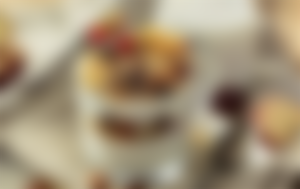
Ingridients: 1 ½ cups of coconut flakes, ½ cups of nuts (macadamia nuts, hazelnuts, almonds, walnuts), 2 tablespoons chia seeds or flax seeds, 2 tablespoons sunflower or pumpkin seeds, ½ teaspoons of cinnamon, ½ teaspoons of ginger (optional), ¼ spoons of grated nutmeg (optional), pinch of salt, ½ cups of coconut or rice drink, a few drops of stevia, lemon juice, plain probiotic yogurt or kefir (optional).
Preparation: Shake all dry ingredients in a bowl with a lid and mix well. Let the flavors mix well for a day or two. So we get three servings of homemade muesli. The muesli is then shaken into a serving bowl. Cover the rest well and save for next time. Separately mix the coconut drink and stevia. Pour over the muesli and, if desired, add a teaspoon or two of plain yoghurt or kefir. Even if we do not have problems with candida, our body will be grateful for such a breakfast.
Lunch - salmon with fennel

Ingridients: 400 g salmon, 1 teaspoon fennel seeds, 1 teaspoon lemon zest, pinch of salt pepper, coconut or olive oil, lemon slices fennel, 2 yellow peppers, 1 onion , 1 lemon.
Preparation: Finely grind fennel seeds in a coffee grinder or grinder. Shake in a bowl, add salt, pepper and lemon zest and pour over the oil. Mix well. Spread over the salmon and rub well. Heat the pan well, add olive oil and fry the salmon on both sides. As a side dish, serve fried vegetables, which are prepared by cutting the vegetables and lemon into slices and frying until golden brown. Serve hot with a few slices of fresh lemon.
Dessert - chocolate-coconut cubes
In case we have candida, it is not necessary to give up the sweet completely. We only need to adjust the ingredients.
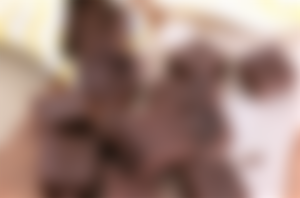
Ingridients: 1 ½ cups of coconut oil. 1 cup cocoa powder. 1 teaspoon vanilla extract (optional). stevia to taste.
Preparation: Dissolve coconut oil in a bowl. Add cocoa powder and mix well. Add vanilla and stevia. Pour into an ice cube tray (or into a small baking dish and then cut them into cubes) and place in the freezer. After one hour, take out of the freezer. Allow to stand at room temperature for a few minutes before serving. Store in the freezer or refrigerator.
Tip: Top 10 foods that help us fight the stubborn candida fungus: coconut, garlic, onion, seaweed, almonds, ginger, olive oil, lemon or. lime, pumpkin seeds and cayenne pepper.
Photos are taken from google.com
Thank you for reading my article.

I wish you Happy weekend.
@Purebeauty
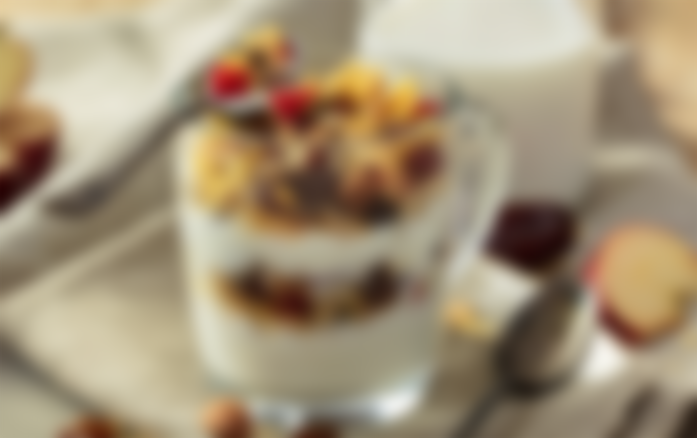
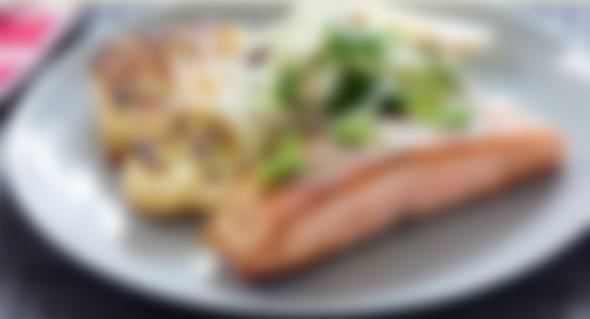
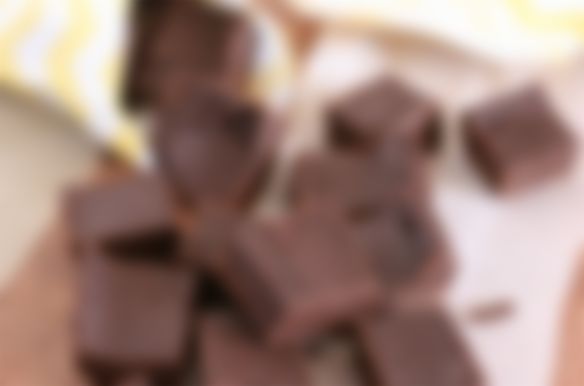

"Ingredients: 1 ½ cups of coconut oil. 1 cup cocoa powder. 1 teaspoon vanilla extract (optional). stevia to taste."
:
My recipe:
olive oil - cocoa powder - honey - turmeric powder (turmeric with a hint of black pepper)
see: https://www.ncbi.nlm.nih.gov/pmc/articles/PMC6714268/